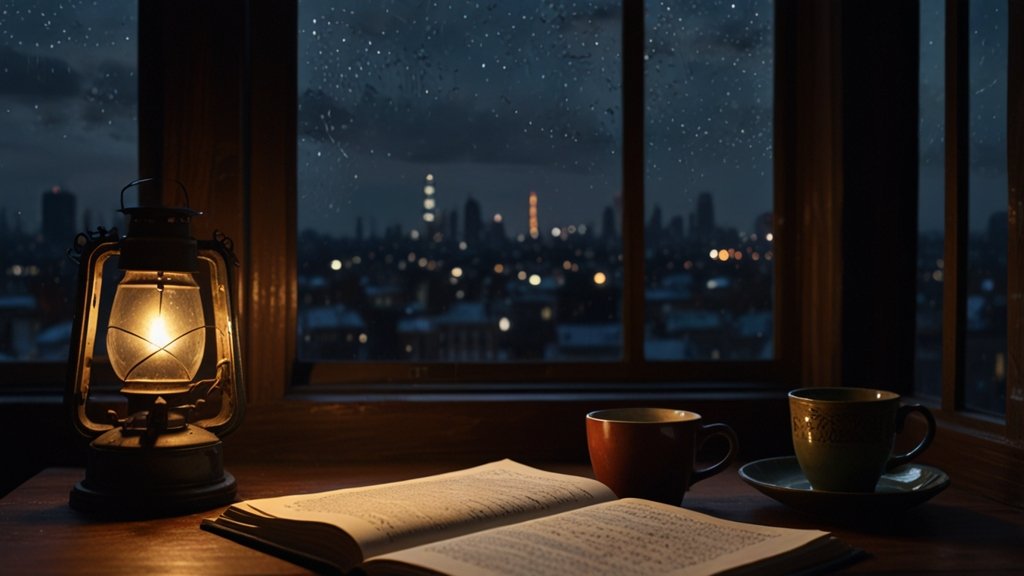Imagine the quiet hum of midnight. The world sleeps, but your thoughts race – a tapestry of unspoken words, a yearning for connection, or perhaps the weight of a silent heartache. In these moments of profound solitude, where do you turn? For millions, the answer lies in the evocative power of alone shayari. These poignant verses, born from the rich soil of Urdu and Hindi poetry traditions, offer a unique language for the soul navigating isolation. They are whispers in the dark, echoing our deepest feelings of loneliness, yet paradoxically, reminding us we are not truly alone in feeling this way. Alone shayari isn’t just poetry; it’s a shared sanctuary for the solitary heart. Let’s explore!
What Exactly is Alone Shayari?
At its core, alone shayari is a distinct sub-genre of Urdu and Hindi poetry laser-focused on articulating the multifaceted experience of solitude. It draws deeply from the broader tradition of shayari – known for its expressive couplets (sher) and longer free-verse poems (nazms) – but hones in specifically on themes of:
- Emotional Isolation: Feeling disconnected from others, even in a crowd.
- Heartbreak and Longing: The profound ache of lost love or unfulfilled desire.
- Introspection and Self-Reflection: Using solitude as a space for deep inner exploration.
- The Search for Solace: The struggle to find comfort and understanding when feeling adrift.
- Resilience in Solitude: Discovering inner strength amidst loneliness.
Unlike some forms of sad poetry that might dwell purely in despair, alone shayari often carries a thread of resilience. It acknowledges the pain but also hints at the quiet strength found in facing one’s solitude head-on. It’s about being alone, but not necessarily feeling defeated by it.
The Roots and Resonance of Solitary Verse
Alone shayari didn’t emerge in a vacuum. Its roots are firmly planted in centuries of Urdu and Persian poetic tradition. Masters like Mirza Ghalib explored profound existential loneliness and the complexities of the human heart. Mir Taqi Mir delved into themes of melancholy and separation. These poets laid the groundwork for expressing the deepest, often darkest, corners of the human experience with unparalleled beauty and nuance.
Modern alone shayari carries this legacy forward. Contemporary poets like Jaun Elia, with his raw and existential angst, or Gulzar, with his subtle and profound reflections on life and relationships, have penned countless verses that resonate deeply with those feeling isolated. The language remains rich with metaphor (istiara), simile (tashbih), and personification (insaan numai), painting vivid pictures of inner desolation:
- “Tanhaiyan bhi saath deti hain, par woh samajhti kya hain?”
(Loneliness also stays with me, but what does it understand?) - “Log kahte hain akela ho tum, tum kahte ho bas itna samjho,
Ki har ek ke dil mein kuchh na kuchh tanhai ka makaan hota hai.”
(People say you are alone, you just say understand this much,
That in everyone’s heart resides some dwelling of loneliness.)
Why Alone Shayari Strikes Such a Deep Chord Today
In our hyper-connected digital age, the paradox of feeling profoundly alone despite constant virtual contact is more prevalent than ever. This is where alone shayari finds immense relevance:
- Validation of Feelings: Reading a couplet that perfectly encapsulates your hidden sorrow or sense of isolation provides immense validation. It whispers, “Someone else has felt this too. You are not broken.”
- A Safe Emotional Outlet: For many, writing alone shayari becomes a cathartic release. Putting complex, painful emotions into structured, beautiful verse is a powerful way to process them.
- Finding Virtual Community: Social media platforms (Instagram, Facebook, Pinterest, dedicated poetry apps like Rekhta) and websites are awash with alone shayari. Sharing or discovering these verses creates instant, silent bonds between strangers who recognize the shared human experience of solitude. Hashtags like #AloneShayari, #TanhaiShayari, and #UrduPoetry connect millions.
- The Beauty of Brevity: Alone shayari is often concise – a single impactful couplet or a short nazm. This brevity makes it easily digestible, shareable, and perfect for capturing fleeting moments of intense emotion.
- Resilience and Reflection: Beyond sadness, much alone shayari subtly explores the strength and self-awareness that can bloom in solitude. It reframes being alone not just as emptiness, but as a space for potential growth.
Also Read: Pernithia Galnith: Where Ancient Myths and Modern Science Collide
Characteristics of Powerful Alone Shayari
Not all verses about loneliness qualify as impactful alone shayari. The most resonant pieces often share these traits:
| Feature | Description | Example (Translated Concept) |
|---|---|---|
| Profound Imagery | Uses vivid, relatable metaphors for loneliness (e.g., deserted streets, empty rooms, fading lights, vast oceans). | “This silence isn’t empty; it’s a crowded room where only my echoes reside.” |
| Emotional Honesty | Feels raw, authentic, and unfiltered, avoiding clichés. | “Don’t ask about the tears; ask about the smile I wear when the world turns its back.” |
| Musicality & Rhythm | Maintains the inherent musicality (lehja) of Urdu/Hindi, even in translation. Uses meter (beher) effectively. | The rhythmic flow of words enhances the melancholic or reflective mood. |
| Universal Touch | While personal, it touches on emotions anyone experiencing solitude can recognize. | “The deepest loneliness isn’t when no one’s around; it’s when someone is, yet miles away.” |
| Hint of Resilience | Often contains an undercurrent of endurance, acceptance, or quiet strength amidst the pain. | “I walk alone, not because I lack companions, but because my path is lit by a different moon.” |
Alone Shayari in the Digital Age: A Comforting Presence
The internet has revolutionized how we discover and share alone shayari. Gone are the days of solely relying on published anthologies or mushaira gatherings (poetry symposiums).
- Instagram & Facebook: Visual platforms thrive with alone shayari overlaid on evocative images (starry skies, rain-streaked windows, lone figures) or shared as text posts. Dedicated poetry pages curate vast collections.
- Pinterest: A treasure trove for discovering and saving verses, often beautifully designed.
- YouTube: Recitations (mushairas) and explanations (shayari breakdowns) by popular voices bring the verses to life audibly, adding another layer of emotion.
- Dedicated Apps & Websites: Platforms like Rekhta, Jashn-e-Rekhta, and Shayarigram offer vast databases, translations, and communities for enthusiasts.
- Messaging Apps: People frequently share alone shayari directly with friends or in groups as a way to express their mood or offer comfort.
This digital proliferation ensures that whenever someone searches for words to express their solitude, alone shayari is readily available, offering instant connection and understanding.
Finding Your Own Voice: Engaging with Alone Shayari
You don’t need to be a published poet to benefit from alone shayari.
- As a Reader: Actively seek it out. Follow poets and pages on social media. Explore websites like Rekhta.org. When a verse resonates, sit with it. Reflect on why it speaks to you.
- As a Writer: Use alone shayari as inspiration or a starting point. Try expressing your own feelings of solitude in a couplet or short poem. Don’t worry about perfection; focus on authenticity. Share it anonymously online if you wish.
- As a Source of Comfort: Bookmark verses that bring you solace. Return to them during difficult times. Share them with others who might need them.
The Enduring Power: More Than Just Sadness
While often born from pain, alone shayari transcends mere melancholy. It represents a profound human capacity:
- To Name the Unnameable: Giving shape and voice to the often-indescribable ache of loneliness.
- To Connect in Disconnection: Creating invisible threads of understanding between solitary souls across time and space.
- To Find Beauty in Darkness: Transforming pain into art, revealing the strange beauty that can exist within solitude.
- To Foster Resilience: Acknowledging the struggle while subtly affirming the enduring spirit within us.
You May Also Read: Velugu ePaper: Your Digital Morning Ritual for Authentic Telugu News
Conclusion
Alone shayari is far more than a collection of sad verses. It is a testament to the human spirit’s ability to articulate its deepest isolation and, in doing so, find a peculiar kind of connection and strength. It transforms the silence of solitude into a whispered symphony understood by millions. In a world that often fears being alone, this poignant poetry offers a gentle reminder: solitude is a universal human experience, and within its quiet depths, we can discover profound truths about ourselves and find solace in shared expression. The next time loneliness descends, remember the timeless words of the poets. Seek out alone shayari. You might just find your feelings reflected, validated, and transformed into something strangely beautiful. In the shared language of solitary verse, we discover we are never truly alone in our aloneness.
FAQs
Q: Is “alone shayari” just about being sad and lonely?
A: While sadness and loneliness are central themes, alone shayari often explores deeper nuances like introspection, self-discovery, the resilience found in solitude, and the universal nature of feeling alone. It acknowledges the pain but can also hint at acceptance and inner strength.
Q: How is “alone shayari” different from general sad shayari?
A: Alone shayari specifically focuses on the state and experience of solitude, isolation, and being by oneself emotionally. General sad shayari (ghamgeen shayari) can cover a wider range of sorrows like heartbreak, loss, or worldly struggles, not necessarily centered on the feeling of being alone.
Q: Do I need to understand Urdu/Hindi fluently to appreciate alone shayari?
A: While knowing the original language enhances appreciation due to the nuances of expression and musicality, many alone shayari verses are translated effectively into English and other languages. The core emotion often transcends language barriers. Platforms like Rekhta often provide Roman transliterations and translations.
Q: Where is the best place to find good alone shayari online?
A: Great places include:
Dedicated poetry websites: Rekhta.org, Jashn-e-Rekhta.
Social Media: Search hashtags like #AloneShayari, #TanhaiShayari, #UrduPoetry, #HindiShayari on Instagram, Twitter (X), Facebook, and Pinterest.
YouTube: Search for recitations (mushaira) or specific poets known for solitude themes (e.g., Jaun Elia, Gulzar, contemporary voices).
Poetry Apps: Shayarigram, Rekhta App.
Q: Can writing alone shayari help if I’m feeling lonely?
A: Absolutely. The act of writing can be incredibly cathartic. Putting complex feelings of isolation into words, even simple verses, helps process emotions, provides a sense of release, and can offer a new perspective on your solitude. It’s a constructive outlet for difficult feelings.
Q: Who are some famous poets known for their alone shayari?
A: Classic masters like Mirza Ghalib and Mir Taqi Mir explored deep solitude. Modern giants include Jaun Elia (known for raw, existential loneliness), Gulzar (subtle reflections on solitude), and contemporary poets like Javed Akhtar and Rahat Indori also touched upon these themes powerfully. Many emerging poets on social media focus specifically on alone shayari.
Q: Is sharing alone shayari on social media just attention-seeking?
A: Not necessarily. For many, sharing alone shayari is a way to:
Express complex emotions they struggle to articulate themselves.
Find validation and connection with others who feel similarly.
Offer comfort to others who might be going through the same.
Simply appreciate the beauty of the poetry itself. It’s a legitimate form of emotional expression and community building.










